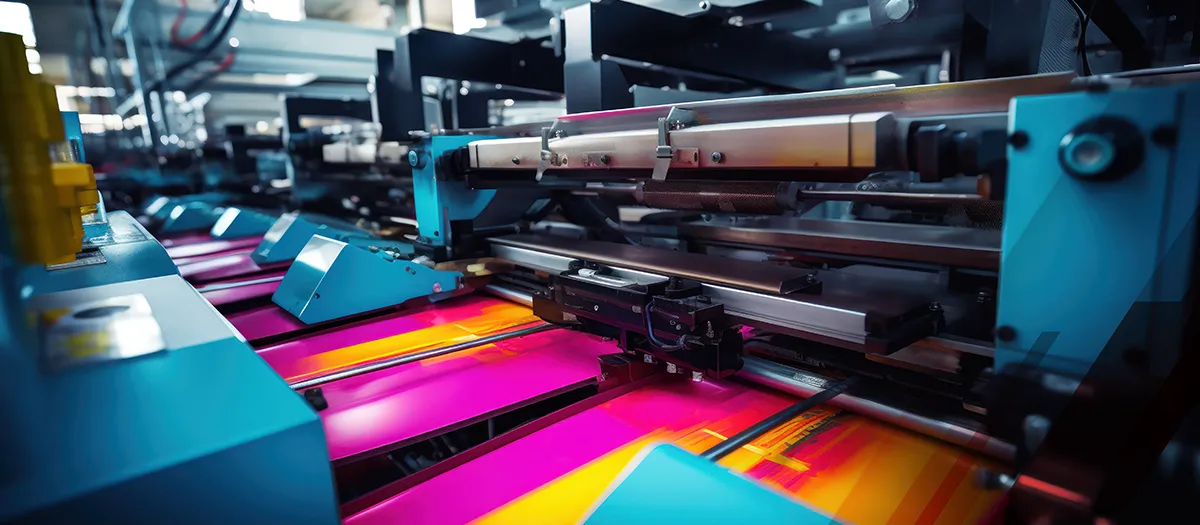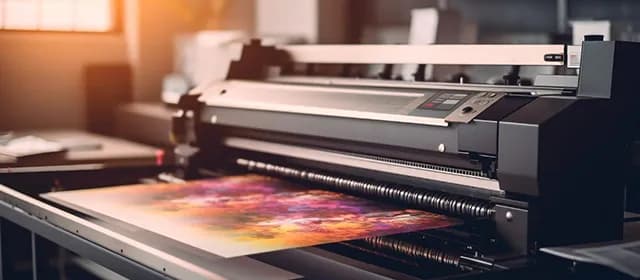Wide format printing has a very recent history, having only been popular towards the close of the previous century when compared to the print industry as a whole.
Over the past 15 years, wide format digital printing also known as large format printers has advanced quickly, and HP and Canon worked together to pioneer inkjet technology. Xerox invented electrostatic technology before inkjet technology was used in the first wide-format digital printers.
According to Kings Research, the wide format printer market is expected to grow at a compound annual growth rate (CAGR) of 6.39% from 2023 to 2030, from its valuation of $9.24 billion in 2022 to a projected value of $15.02 billion by 2030. This blog post discusses the top ten companies involved in this billion-dollar industry based on their product offerings.
What Is Wide Format Printers?
Printers built to handle demanding printing jobs are known as wide format printers. They can print on materials with widths ranging from two to more than fifteen feet, including paper, vinyl, fabrics, and other materials. Signs, posters, banners, and other large graphics can be produced with great quality with these printers, which usually use inkjet technology.
Wide format photo printers can be divided into groups according to the kind of ink transfer method they use. Aqueous inkjet printers are the most widely used variety; they contain pigments in non-reactive or water-based carrier solutions. There are two types of aqueous ink: pigment ink, which may have a duller color but is more resistant to fading from UV rays, and dye ink, which gives a wider color spectrum but is less UV-resistant.
What Is The Difference Between Wide Format And Large Format Printing?
The terms "wide format printing" and "large format printing" are often used interchangeably, but they have distinct differences. Wide format printing typically refers to printing projects with a width between 18 and 100 inches. This method is used for various applications, including banners, posters, trade show graphics, wallpaper, murals, and vehicle wraps, often utilizing wide format inkjet printers or toner-based technology for high-quality results on diverse media types.
In contrast, large format printing is a broader category that includes any print project larger than what a standard commercial printer can handle. It encompasses wide format printing and extends to super-wide or grand format printing, commonly used for creating oversized prints such as signage, billboards, building wraps, and other large-scale visual displays.
Top 10 Wide Format Printers Companies In the World
1. Canon Inc
Canon continues to innovate in the wide format printing sector with its imagePROGRAF series. The latest additions, such as the imagePROGRAF PRO-300, are designed for high-quality photo and fine art printing. These printers utilize Canon’s advanced LUCIA PRO pigment ink technology, delivering exceptional color accuracy and durability. Canon has also focused on improving software integration to streamline workflow and enhance the user experience.
2. Konica Minolta
Konica Minolta is one of the best wide format printers that has made significant strides with its AccurioWide series, particularly the AccurioWide 200 and 250. These printers are designed for high-demand environments, offering robust performance and versatility for various media types. The integration of KIP ImagePro software enhances workflow efficiency, providing tools for easy job editing and color management, making it a comprehensive solution for both technical and graphic printing needs.
3. Lexmark International
Lexmark has been expanding its presence in the wide format printing market with a focus on sustainability and efficiency. Their latest models incorporate energy-efficient technologies and recyclable materials. The Lexmark C9200 series offers high-speed printing capabilities and advanced security features, catering to the needs of large enterprises.
4. Mimaki Engineering Co
Mimaki continues to lead with its cutting-edge technology in wide format printers, such as the JV330 series. These printers feature Mimaki’s proprietary inkjet technology, which ensures high-quality prints with vibrant colors. The company has also introduced eco-solvent inks, which are environmentally friendly and reduce the impact on the environment while maintaining high print standards.
5. Mutoh
Mutoh has recently launched the XpertJet series, designed for superior print quality and high productivity. The XpertJet 1682SR Pro, in particular, uses Mutoh’s new AccuFine print heads and the VerteLith RIP software, which enhance precision and color consistency. This makes it ideal for applications like signage, vehicle wraps, and fine art printing.
6. Seiko Instruments
Seiko Instruments has introduced the ColorPainter series, known for its reliability and high-speed performance. The latest ColorPainter M-64s model is equipped with low-odor eco-solvent inks, providing excellent outdoor durability and vivid color reproduction. This printer is tailored for large-scale graphics and signage applications.
7. Xerox Corporation
Xerox’s latest advancements in wide format printing include the introduction of wide format color laser printers like IJP 2000. This printer boasts rapid printing speeds and high-quality outputs, making it ideal for large-scale print jobs like banners and posters. Xerox has also enhanced its workflow software to improve job management and reduce turnaround times.
8. HP Development Company
HP remains a major player with its DesignJet series, specifically the HP DesignJet Z9+ and T2600 models. These printers are designed for high-quality photo and graphic printing, featuring HP’s Pixel Control technology for precise color accuracy. HP has also focused on sustainability, using recyclable materials and energy-efficient designs.
9. MODIX MODULAR TECHNOLOGIES LTD
MODIX specializes in large-scale, modular 3D printers, with applications in wide format printing for prototypes and custom designs. Their latest models, like the MODIX Big-120X, offer substantial build volumes and customizable features, making them versatile for various industrial and commercial printing needs.
10. FUJIFILM
FUJIFILM has advanced its wide format printer lineup with the Acuity series, including the Acuity Ultra. These printers are designed for high-end applications, delivering exceptional image quality and consistency. FUJIFILM’s focus on UV LED curing technology also ensures faster production speeds and energy efficiency.
End Note
To sum up, the wide format printers market is a vibrant and inventive one, fueled by leading businesses that consistently push the limits of print technology. From Konica Minolta's AccurioWide printers to Canon's imagePROGRAF series, each firm provides a special combination of features and capabilities to meet the varied needs of professionals in various industries.
These top 10 businesses have proven their dedication to providing premium wide format printing solutions, whether it is through the creation of eye-catching graphics, the improvement of color accuracy, or the improvement of workflow effectiveness. Wide format printing appears to have a bright future thanks to continuous improvements in print head technology, color management, and environmentally friendly features.




